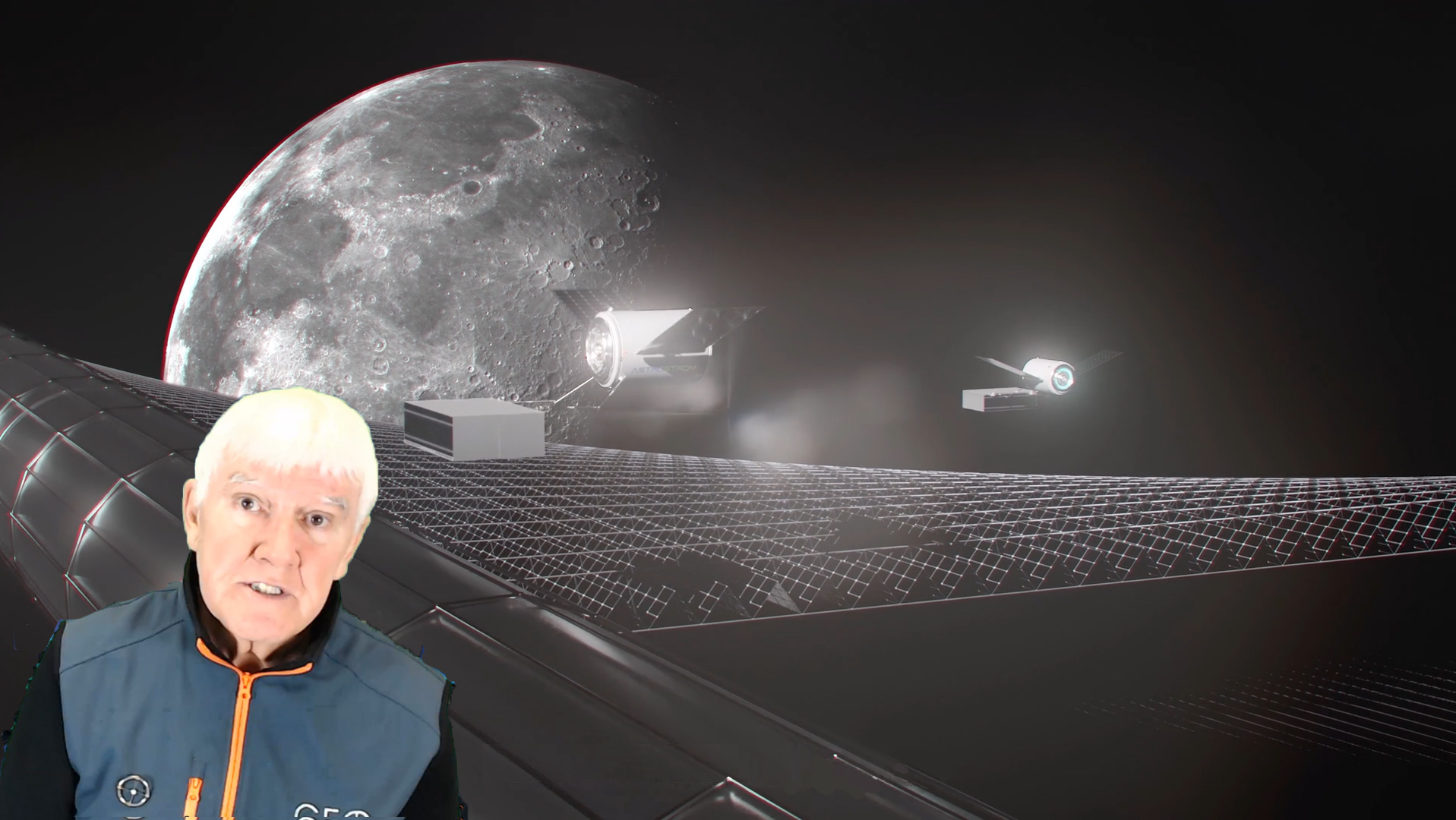
- This event has passed.
Greater Earth Energy Synergies
19 June 2023 @ 7:00 pm - 8:30 pm UTC

Abstract
In the context of ESA’s open call for proposals “Clean Energy from Space” which sought novel ideas related to Space-Based Solar Power (SBSP) systems, Astrostrom GmbH has been investigating the feasibility of the “Greater Earth Lunar Power Station” (GE⊕-LPS) designed to provide power from space to operations on the lunar surface. This is a crewed facility in lunar orbit that will be constructed primarily from lunar materials. If shown to be both feasible and scalable, manufacturing future Solar Power Satellite (SPS) components from lunar materials and transporting these to geostationary orbit (GEO), would be a means to avoid the need to launch hundreds or thousands of massive SPSs from the surface of the Earth in order to supply environmentally benign, baseload electricity to Earth. […] The GE⊕-LPS is a is a concept that advances lunar development in order to contribute to terrestrial energy production. The construction of GE⊕-LPS with lunar materials requires developing facilities on the Moon for automated mining and manufacturing processes. […] The establishment of industrial-scale beneficiation and processing plants will provide access to several materials, which may become valuable to other users in the cislunar region. In addition to small amounts of Helium-3, a vast amount of oxygen will be produced as a by-product which can be used in life support systems and as rocket propellant, thereby creating business cases for new cislunar enterprises. GE⊕-LPS is being designed to provide plentiful electrical power for lunar activities; serve as a gateway between Earth and Moon operations; and be a prototype for future space settlements and tourism in cislunar space. As it is foreseen that the energy production functions of the GE⊕-LPS concept can be scaled to any dimension, larger versions could be positioned in Earth orbit to provide much needed clean, continuous solar electricity for terrestrial users. Driven by the ever-growing energy market on Earth, a two-planets economic system will emerge, which will dramatically lower the costs of transporting people and resources between LEO and the lunar surface, and accelerate the growth of many new cislunar businesses. As such, the GE⊕-LPS project unites the aims of lunar development with widely shared aspirations for expanded space activities, while also addressing the critical energy and environmental needs of human civilization on Earth.
Short bios
Arthur R. Woods: CEO Astrostrom GmbH is a Swiss independent researcher and astronautical artist with two art-in-space projects successfully flown on the Russian Mir space station: the Cosmic Dancer sculpture in 1993 and Ars Ad Astra: The First Art Exhibition in Earth Orbit in 1995 during the EuroMir95 mission. His work has been exhibited in a number of international space and art exhibitions. He has co-managed several studies for the European Space Agency and the International Academy of Astronautics of which is a full member and is a member of the IAA Permanent Committee on Space Solar Power. Currently, he is co-chair of the Moon Village Association’s Cultural Considerations Working Group. He grew up in the vicinity of the Kennedy Space Center in Florida between 1959 and 1970 and worked at the space center in the summers of 1967 & 1968 during the Apollo program.
Andreas Vogler is a Swiss architect and director of Andreas Vogler Studio. He worked in London, TU Munich, TU Delft and as a Guest Professor at The Royal Academy of Fine Arts in Copenhagen, researching on prefabricated buildings, light weight construction and space architecture. In 1999 he did parabolic test flights with NASA Houston. In 2003 he co-founded ‘Architecture and Vision’, working in the fields of aerospace, art and architecture. His studio work in architecture, transportation design and robotics. Space projects include habitats and manned rovers for Moon and Mars as well as inflatables. His works are included in the permanent collections of the Museum of Modern Art MoMA, New York and the Museum of Science and Industry, Chicago.
Dr. Patrick Collins is a British expert on space solar power and space tourism currently residing in Japan. He is chairman of the Society for Space Tourism of Japan (SSTJ) and Emeritus Professor of Azabu University, where he taught economics for 19 years. Earlier he was a Guest Researcher at the Research Center for Advanced Science and Technology of Tokyo University (RCAST), the National Space Development Agency (NASDA), the National Aerospace Laboratory (NAL) and the Institute for Space and Astronautical Science (ISAS) in Japan. Before that he was Senior Lecturer at Imperial College in London, where he wrote his doctoral thesis on the economics of solar power satellites, while also working as a part-time researcher at ESTEC. Currently, he is a Vice-President and one of the Founders of Space Renaissance International. The focus of Dr. Collins’ research for the past 40 years has been how to stimulate growth of commercial space activities, the two most important opportunities being tourism and solar power satellites, including their use as snow melting satellites (SMS) – topic he has co-authored with Marco Bernasconi. He has written some 200 publications.